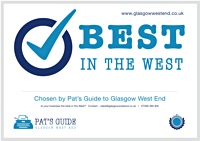Shetland Islands August 2011
Helen Rose Hill Diary
The Shetland Islands are the most northerly of the Scottish Islands and are north east of the mainland on the same latitude as Bergen in Norway. Being so far north there is very little darkness in mid summer. Conversely, there is very little daylight in mid winter! They have a winter festival called Up Hellya to brighten up the long dark nights but more of that later. I visited the Shetland Islands in mid summer so there was lots of daylight and even good weather. They are windswept islands and few trees grow on them but there are lovely gardens in sheltered spots. The islands have a wonderful history and outstanding landscapes with dramatic sea cliffs along with an unusual culture.
The main historical sites are the Broch at Mousa and Jarlshof and although these are the most well known, there are many other sites of great historical interest. Mousa is an island on the south west of the Shetland Islands and is reached by a short boat ride. It is also a Royal Society for the Protection of Birds www.rspb.org.uk sanctuary where Arctic Skuas and Black Guillemots can be seen as well as many other birds. However, it is also famous for the Broch which is the finest surviving example of a two thousand year old Iron Age Tower. You can climb up the inside stairs to the gallery on top of the walls although it is not known whether it was roofed or not. It is maintained by Historic Scotland.
.jpg) The Islands are rich in archaeology and the site at Jarlshof has been described officially as one of the most remarkable archaeological sites ever excavated in the British Isles’. It was only discovered a hundred years ago. There are six main levels, from a Stone Age Hut from four thousand years old, through an Iron Age Broch and wheelhouses to a sizeable Viking Village and medieval farmstead. Historic Scotland at www.historic-scotland.gov.uk has a visitors centre here with preserved artefacts on show. Most of a day can easily be spent just wandering around the site which is adjacent to the sea. The sand actually preserved the site similar to Skara Brae in Orkney.
The Islands are rich in archaeology and the site at Jarlshof has been described officially as one of the most remarkable archaeological sites ever excavated in the British Isles’. It was only discovered a hundred years ago. There are six main levels, from a Stone Age Hut from four thousand years old, through an Iron Age Broch and wheelhouses to a sizeable Viking Village and medieval farmstead. Historic Scotland at www.historic-scotland.gov.uk has a visitors centre here with preserved artefacts on show. Most of a day can easily be spent just wandering around the site which is adjacent to the sea. The sand actually preserved the site similar to Skara Brae in Orkney.
We also visited St Ninians Isle by walking across the tombolo ( a strip of sand connecting two islands!) from Bicton to visit the Celtic Chapel where a schoolboy in 1958 discovered silver treasure believed to date from 800AD. Throughout Shetland, there are numerous glorious sandy beaches but the weather is not for sunbathing although we had dry and sunny weather most of the time but it does tend to be windy and sometimes very wet. Most treasure or copies from the islands can be seen at the excellent Museum in Lerwick.
Lerwick Museum also has much amusing footage of early Up Hellya Festivals. The islanders do not speak Gaelic and have been more influenced by Scandinavia. Much of the new housing is very similar to housing seen in Iceland and the Scandinavian countries. The islands have had previous Viking settlements and Up Hellya draws on Nordic culture with the islanders dressing in Viking Helmets and costumes. It is very much a community events with schools involved and children inventing costumes and party pieces. The event takes place in late January and the Viking Boat that has been built in the previous year is burned on the beach. It sounds like a fun festival and I certainly have it on my list to go to in a future year.
I can’t finish without mentioning the Puffins known as Taamie Nories at Sumburgh Head which is the most accessible place in the UK to see a colony of Puffins. These comical little birds are delightful and pose obligingly for photos. The Shetland Islands were reminiscent of the Outer Hebrides with stone crofts and peat cutting. However, that has changed as these islands are now prosperous from the oil and gas reserves pumped ashore at Sullom Voe. The Islands are fascinating and well worth visiting and I have not even mentioned the iconic Shetland pony! The trip was arranged by Fred Chatterton at www.scot-trek.co.uk
Coming attractions; The Baltic and the Grey Corries.
Contact me at [email protected]







